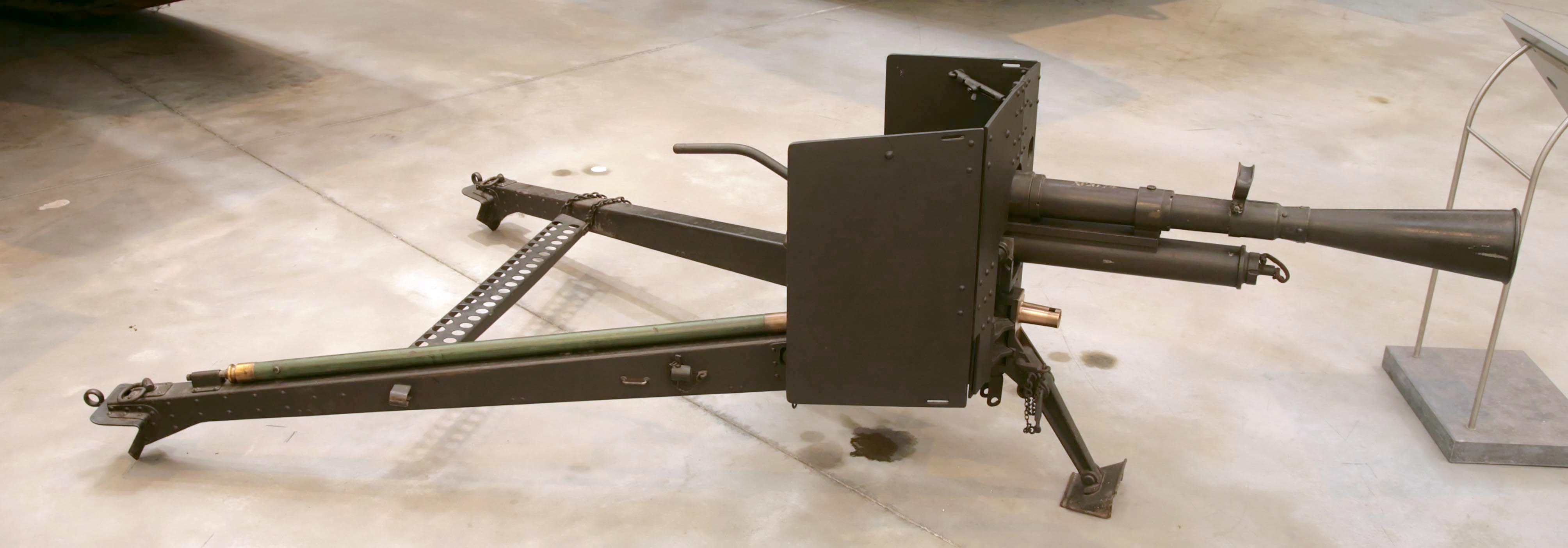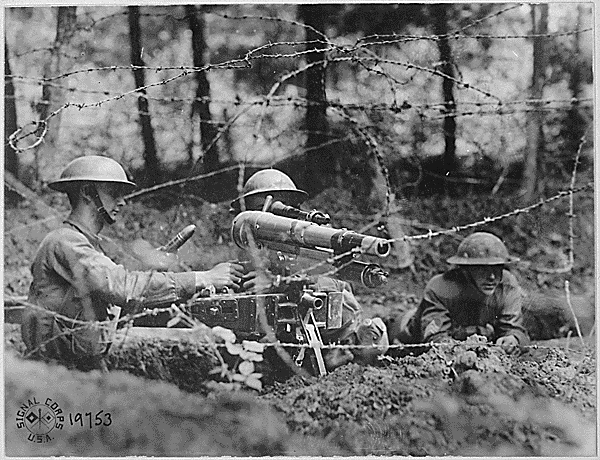Canon D'Infanterie De 37 Modèle 1916 TRP on:
[Wikipedia]
[Google]
[Amazon]
The ''Canon d'Infanterie de'' 37 ''modèle'' 1916 TRP (37mm mle.1916) was a French infantry support gun, first used during
 During the First World War, the guns saw widespread use with both French and United States forces and were designated the
37mm M1916 in U.S. service. In combat they were found to be wanting, and it was found their intended task of destroying gun emplacements was better done by mortars. As well as infantry use, the guns were also fitted to the M1917 light tank, the first mass-produced U.S. tank. These tanks entered service too late for World War I, and none ever saw action.
During the First World War, the guns saw widespread use with both French and United States forces and were designated the
37mm M1916 in U.S. service. In combat they were found to be wanting, and it was found their intended task of destroying gun emplacements was better done by mortars. As well as infantry use, the guns were also fitted to the M1917 light tank, the first mass-produced U.S. tank. These tanks entered service too late for World War I, and none ever saw action.

 During the interwar years the
During the interwar years the
www.landships.freeservers.com
{{DEFAULTSORT:Canon D'infanterie De 37 Modele 1916 Trp Artillery of France Aircraft artillery World War I infantry guns of France World War II weapons of France World War I artillery of the United States 37 mm artillery Weapons of the Philippine Army Engine guns
World War I
World War I or the First World War (28 July 1914 – 11 November 1918), also known as the Great War, was a World war, global conflict between two coalitions: the Allies of World War I, Allies (or Entente) and the Central Powers. Fighting to ...
. TRP stands for ''tir rapide, Puteaux'' ("fast-firing", designed by the Puteaux arsenal). The tactical purpose of this gun was the destruction of machine gun nests.
It was also used on aircraft such as the Beardmore W.B.V and the Salmson-Moineau. Fighter ace
A flying ace, fighter ace or air ace is a military aviation, military aviator credited with shooting down a certain minimum number of enemy aircraft during aerial combat; the exact number of aerial victories required to officially qualify as an ...
René Fonck
Colonel René Paul Fonck (27 March 1894 – 18 June 1953) was a French aviator who ended the First World War as the top Triple Entente, Entente fighter Flying ace, ace and, when all succeeding aerial conflicts of the 20th and 21st centurie ...
was one pilot known to have used the SPAD S.XII
The SPAD S.XII or SPAD 12 was a French single-seat biplane fighter aircraft of the First World War developed from the successful SPAD VII by Louis Béchereau, chief designer of the Société Pour L'Aviation et ses Dérivés (SPAD).
Development ...
, which was designed around a variant of the 37mm Puteaux gun firing though the propeller spinner.
Description
,Fort Moore
Fort Benning (named Fort Moore from 2023–2025) is a United States Army post in the Columbus, Georgia area. Located on Georgia (U.S. state), Georgia's border with Alabama, Fort Benning supports more than 120,000 active-duty military, family me ...
The ''modèle 1916'' gun's 37mm caliber was the smallest allowed for explosive shells under the Hague Conventions of 1899 and 1907, 1899 Hague Convention and hence was used by many nations for small guns.
The guns were fitted to a tripod, to which wheels could be attached for transport. The guns could also be carried by four soldiers, after being broken down into two loads: the gun and recoil mechanism, and the trails, each of which could be carried by two soldiers. Some were equipped with a gun shield
A U.S. Marine manning an M240 machine gun equipped with a gun shield
A gun shield is a flat (or sometimes curved) piece of armor designed to be mounted on a crew-served weapon such as a machine gun, automatic grenade launcher, or artillery pie ...
.
The breech-block of the gun was essentially a smaller version of that fitted to the well-known French 75 gun.Handbook of Artillery, (1920), p.54
The guns could be crewed by two soldiers, a loader and an aimer, and had a maximum rate of fire of around 35 rounds per minute.Handbook of Artillery, (1920), p.52 They were equipped with a removable APX telescopic sight for direct fire, and a quadrant sight for indirect fire.
In U.S. service, each gun was assigned an ammunition limber, which carried 14 boxes containing 16 rounds of ammunition each as well as tools and accessories.Handbook of Artillery, (1920), p.55 The gun and its limber were normally together towed by a single horse or mule, but were manhandled forward if contact with the enemy was expected.
U.S. high explosive ammunition for the TRP was the Mark II HE shell with a projectile weighing and a TNT
Troponin T (shortened TnT or TropT) is a part of the troponin complex, which are proteins integral to the contraction of skeletal and heart muscles. They are expressed in skeletal and cardiac myocytes. Troponin T binds to tropomyosin and helps ...
bursting charge of 27.2 grams. The French Army used the ''Obus explosif Mle1916'' HE round with a projectile weighing and a bursting charge of 30 grams. Captured rounds of this type were designated ''Sprgr 147(f)'' by the German military in World War II
World War II or the Second World War (1 September 1939 – 2 September 1945) was a World war, global conflict between two coalitions: the Allies of World War II, Allies and the Axis powers. World War II by country, Nearly all of the wo ...
.
Service history
 During the First World War, the guns saw widespread use with both French and United States forces and were designated the
37mm M1916 in U.S. service. In combat they were found to be wanting, and it was found their intended task of destroying gun emplacements was better done by mortars. As well as infantry use, the guns were also fitted to the M1917 light tank, the first mass-produced U.S. tank. These tanks entered service too late for World War I, and none ever saw action.
During the First World War, the guns saw widespread use with both French and United States forces and were designated the
37mm M1916 in U.S. service. In combat they were found to be wanting, and it was found their intended task of destroying gun emplacements was better done by mortars. As well as infantry use, the guns were also fitted to the M1917 light tank, the first mass-produced U.S. tank. These tanks entered service too late for World War I, and none ever saw action.

 During the interwar years the
During the interwar years the U.S. Army
The United States Army (USA) is the primary land service branch of the United States Department of Defense. It is designated as the Army of the United States in the United States Constitution.Article II, section 2, clause 1 of the United Stat ...
organized its infantry regiments with "howitzer companies," armed, with among other heavy infantry weapons for want of actual infantry support howitzers, 37 mm M1916 guns. The Regular Army could not afford to maintain full companies (instead using platoons), but the National Guard could. The Army adopted a .22 caliber sub-caliber device as an economic measure that allowed training with the guns on indoor ranges. By 1941, the howitzer companies of regiments were disbanded and converted to antitank platoons; the Army put most of the M1916 guns into storage, scrapped them, or converted their mechanisms for use as sub-caliber training devices for heavy guns. Some were used in the Philippines campaign in 1941-42 as antitank weapons due to shortages of the 37 mm gun M3. The Japanese Type 11 37 mm infantry gun was based on this design.
The French Army still had the cannon in service in 1940 as a substitute for the 25 mm Hotchkiss anti-tank gun, which was in short supply. After the defeat of France by Germany, the Wehrmacht
The ''Wehrmacht'' (, ) were the unified armed forces of Nazi Germany from 1935 to 1945. It consisted of the German Army (1935–1945), ''Heer'' (army), the ''Kriegsmarine'' (navy) and the ''Luftwaffe'' (air force). The designation "''Wehrmac ...
began using the TRP under the designation ''3.7 cm IG 152(f)''.
Some were used by the Việt Minh
The Việt Minh (, ) is the common and abbreviated name of the League for Independence of Vietnam ( or , ; ), which was a communist-led national independence coalition formed at Pác Bó by Hồ Chí Minh on 19 May 1941. Also known as the Vi ...
at the beginning of the First Indochina War
The First Indochina War (generally known as the Indochina War in France, and as the Anti-French Resistance War in Vietnam, and alternatively internationally as the French-Indochina War) was fought between French Fourth Republic, France and Việ ...
.
Aircraft use
The gun was fitted on some aircraft, firing through the propeller's spinner to avoid hitting the blades. It was used in combat on the 1917 FrenchSPAD S.XII
The SPAD S.XII or SPAD 12 was a French single-seat biplane fighter aircraft of the First World War developed from the successful SPAD VII by Louis Béchereau, chief designer of the Société Pour L'Aviation et ses Dérivés (SPAD).
Development ...
. The prototype 1917 British Beardmore W.B.V shipborne fighter was fitted with a 37mm for use against airships, but the gun was considered dangerous and removed.
See also
* List of infantry guns * List of aircraft artillery ;Similar weapons * 3.7 cm Infanteriegeschütz M.15 * 37 mm trench gun M1915 * 37 mm Infantry Gun Model 1917 * 3.7 cm TAK 1918 * Type 11 37 mm infantry gun * Puteaux SA 18References
;Citations ;Bibliography * * TM 9-2005 volume 3 Ordnance Materiel-General dated 1942 * FM 23-75 * TM 9-2300 standard artillery and fire control material. dated 1944 * SNL A-7 * SNL C-33External links
*www.landships.freeservers.com
{{DEFAULTSORT:Canon D'infanterie De 37 Modele 1916 Trp Artillery of France Aircraft artillery World War I infantry guns of France World War II weapons of France World War I artillery of the United States 37 mm artillery Weapons of the Philippine Army Engine guns